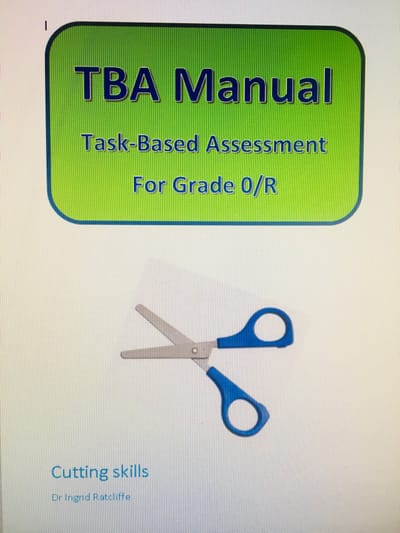Children are the future
Successful reading and mathematics.
About
Dear parent,
Are you excited about your child learning to read, write and do maths? But do you know about the underlying skills needed, to easily learn these skills?
My name is Ingrid Ratcliffe, ( PhD Occupational Therapy) and I have worked with children for over 30 years. I, like many of you, were extremely excited when my children started grade 1. I was lucky enough to be prepared myself, therefore not having to worry about my children being ready. I soon learned, that this was a concern for many parents and I spent much time reassuring them.
I was often told that my children were "lucky", as I knew what to do with them. Having worked in the school system for many years, I've had much interaction with educators, speech therapists, psychologists, medical doctors, physiotherapists and of course you, the parent. Having dealt with many children that struggled with this process of learning-to-read, learning-to-write and understanding numbers, I have developed programs to assist these children. In fact, many children did not have problems, but were just not stimulated correctly, thus leading to academic difficulties.
I have often been approached by friends asking me about spatial perception, the vestibular system, crossing the midline, or any other term that is currently in fashion. So I thought that there are probably many mothers, fathers or caregivers out there, that do have these questions too.
Are you excited about your child learning to read, write and do maths? But do you know about the underlying skills needed, to easily learn these skills?
My name is Ingrid Ratcliffe, ( PhD Occupational Therapy) and I have worked with children for over 30 years. I, like many of you, were extremely excited when my children started grade 1. I was lucky enough to be prepared myself, therefore not having to worry about my children being ready. I soon learned, that this was a concern for many parents and I spent much time reassuring them.
I was often told that my children were "lucky", as I knew what to do with them. Having worked in the school system for many years, I've had much interaction with educators, speech therapists, psychologists, medical doctors, physiotherapists and of course you, the parent. Having dealt with many children that struggled with this process of learning-to-read, learning-to-write and understanding numbers, I have developed programs to assist these children. In fact, many children did not have problems, but were just not stimulated correctly, thus leading to academic difficulties.
I have often been approached by friends asking me about spatial perception, the vestibular system, crossing the midline, or any other term that is currently in fashion. So I thought that there are probably many mothers, fathers or caregivers out there, that do have these questions too.

New Arrival
Main categories
Occupational Therapists
All activities on this website can be used by therapists during their treatment sessions. However, in order to save time and to be able to focus on tasks that are more complex, these visual perceptual learn sheets can be recommended as a home program, as the child (with the help of parents) is able to work through these in their own time.
The TBA (Task-Based assessment) for grade 0/R
For Occupational Therapists only
Part 1 Cutting Skills
General:
Cutting skills (Part 1 of the TBA) is part of a bilateral assessment tool developed during a PhD thesis. As it is task-based, it can be used numerous times throughout the year.
The performance on the TBA is based on the amount of time spent in the grade 0/R year. The child’s age thus is not used to compare the skill level to the norm, but rather how long the child has been in grade 0/R. The reason for this is the fact that children have to be able to cope within their school year, no matter how old they are.
Therapists are able to photocopy the test (as long as the copy is clear). Each therapist is urged to practice the assessment on 3 ‘normals’.
How does it work:
The TBA (Task-Based assessment) for grade 0/R
For Occupational Therapists only
Part 1 Cutting Skills
General:
Cutting skills (Part 1 of the TBA) is part of a bilateral assessment tool developed during a PhD thesis. As it is task-based, it can be used numerous times throughout the year.
The performance on the TBA is based on the amount of time spent in the grade 0/R year. The child’s age thus is not used to compare the skill level to the norm, but rather how long the child has been in grade 0/R. The reason for this is the fact that children have to be able to cope within their school year, no matter how old they are.
Therapists are able to photocopy the test (as long as the copy is clear). Each therapist is urged to practice the assessment on 3 ‘normals’.
How does it work:
- The assessment is purchased online; it is a digital file, which you can download.
- It contains the Test Manual with background information on the test development. Further, it contains the Assessment Sheet as well as the Observation Sheet with the Scoring.
- It is recommended to video the assessment in order to assist with correct observations for scissor grip, cutting motion and cutting approach.
- Duration of the test is about 5 minutes and scoring is done afterwards with the use of the video recording.
- Once you have practiced your 'normals', you are ready to use the TBA with your clients.
- Fill in the observation sheets on scissor grip, cutting motion and cutting approach.
- Look up your results in the results section; this is done according to the months spent in the classroom, rather than the individual age of the child.
- Part 1 of the TBA is the assessment of cutting skills. The other parts of the test will be made available at a later stage. These include: name writing, drawing around an object, threading, buttoning, tearing and tying shoelaces.
- You may purchase this test online.
- As the test is mailed in digital format, you will need some equipment.
- One pair of right-handed and one pair of left-handed scissors. These should be round-nosed and about 13 cm long, in order to fit into the child's hand.
- Print one see-through overlay with the circle and square on it as you will need this to measure your results.
- Cell phone to take the video and also for timing.
- A ruler and a set square for measuring.


Parents and Teachers
Contact
- Johannesburg, Gauteng, South Africa


